Key takeaways:
- Language barriers can create challenges during travel, highlighting the importance of effective communication for positive interactions.
- Utilizing translation apps and learning basic phrases can significantly enhance communication and travel experiences.
- Non-verbal communication and gestures can effectively bridge gaps in understanding, fostering connections despite language differences.
- Patience and preparation are key strategies for navigating language issues, transforming challenges into opportunities for personal growth.
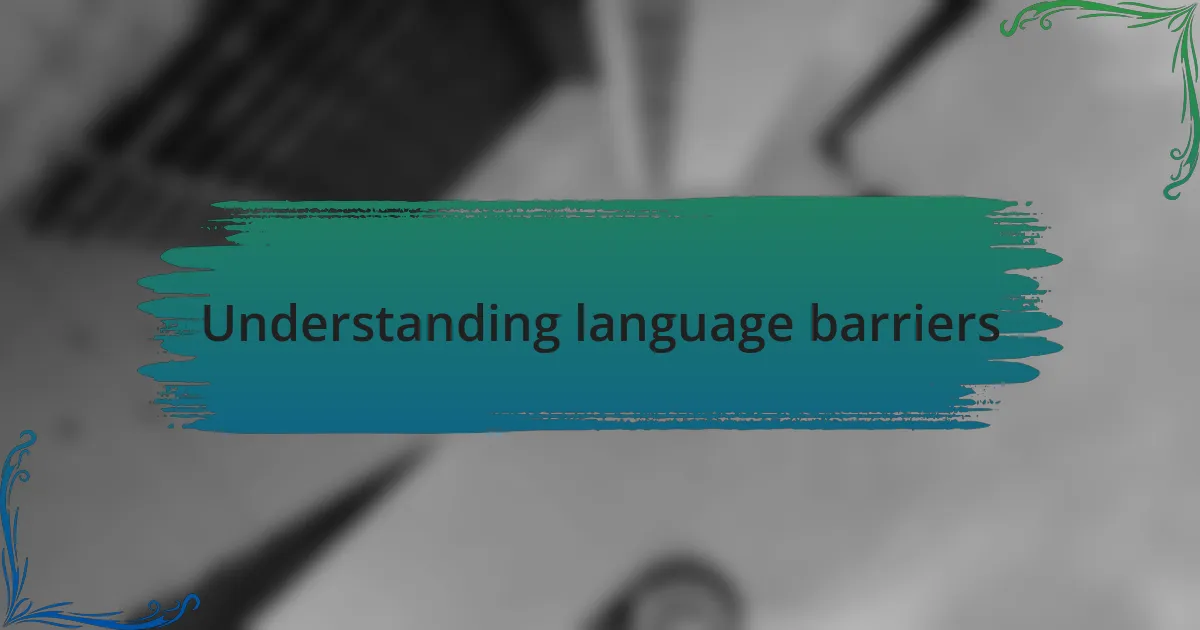
Understanding language barriers
Language barriers can feel overwhelming, especially when traveling. I recall a time in Bangkok when I struggled to communicate my order at a street food stall. The look of confusion on the vendor’s face mirrored my own, and I remember thinking, how can something as simple as food become such a complicated experience?
Navigating different languages pushes us into unfamiliar territory, prompting us to find creative solutions. I often find myself using gestures or drawing pictures to help convey my message. Have you ever drawn a smiley face to show you want something tasty? It’s a light-hearted way to break down communication barriers and foster a connection, even if just for a moment.
Understanding the nuances of language barriers goes beyond words; it taps into our emotions and cultural differences. I’ve felt both frustration and amusement in these situations, reminding me that communication is more than just spoken language. It’s a dance of understanding and patience, where each misstep can lead to an unexpected, and often delightful, outcome.
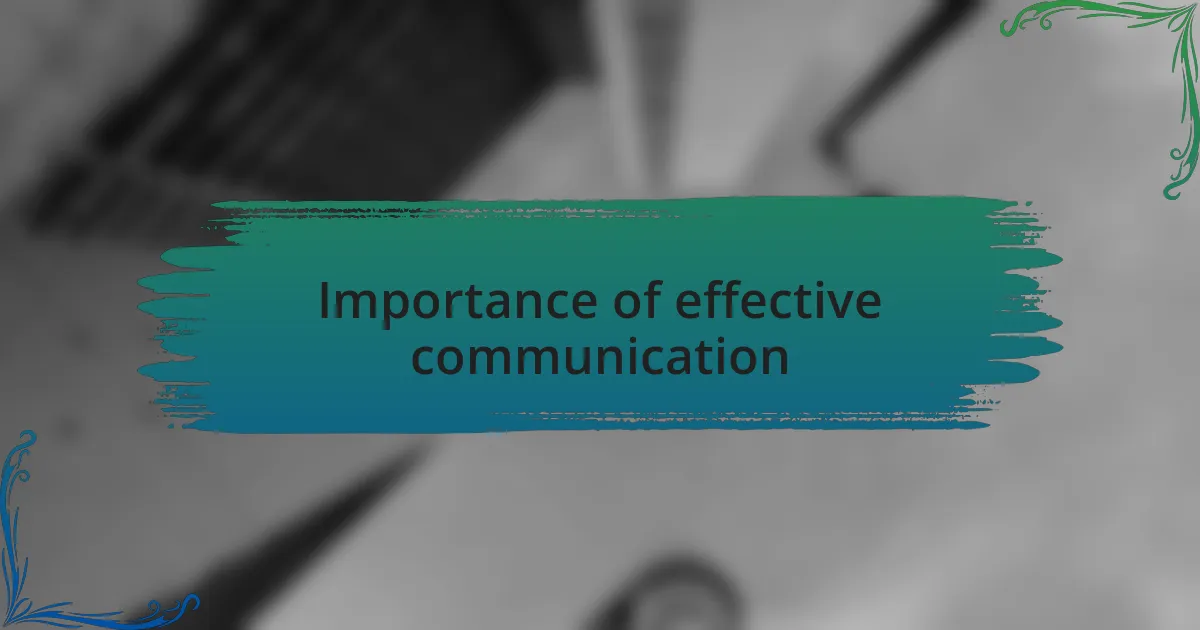
Importance of effective communication
Effective communication serves as the backbone of meaningful interactions, especially in the context of travel. I remember waiting at a Thai airport, trying to ask for directions. The moment we finally understood each other, thanks to a mix of a few shared words and friendly nods, a sense of relief washed over me. Isn’t it amazing how a simple exchange can transform a potentially frustrating experience into a shared understanding?
When communication flows smoothly, it not only reduces anxiety but also builds trust. I once had a delightful conversation with a flight attendant who spoke just enough English to help me navigate available meals on our flight. Her warm smile and patient demeanor made me feel valued and taken care of, illustrating how effective communication elevates customer service. Have you ever felt more relaxed when someone made the effort to communicate with you, even if language was a challenge?
Moreover, effective communication fosters a sense of community among diverse cultures. I found joy in understanding local traditions through engaging conversations with fellow travelers and locals. Those moments painted a richer picture of my surroundings, allowing me to experience Thailand beyond tourist attractions. It truly underscores how connecting through communication—regardless of language—can deepen our appreciation for one another’s experiences.
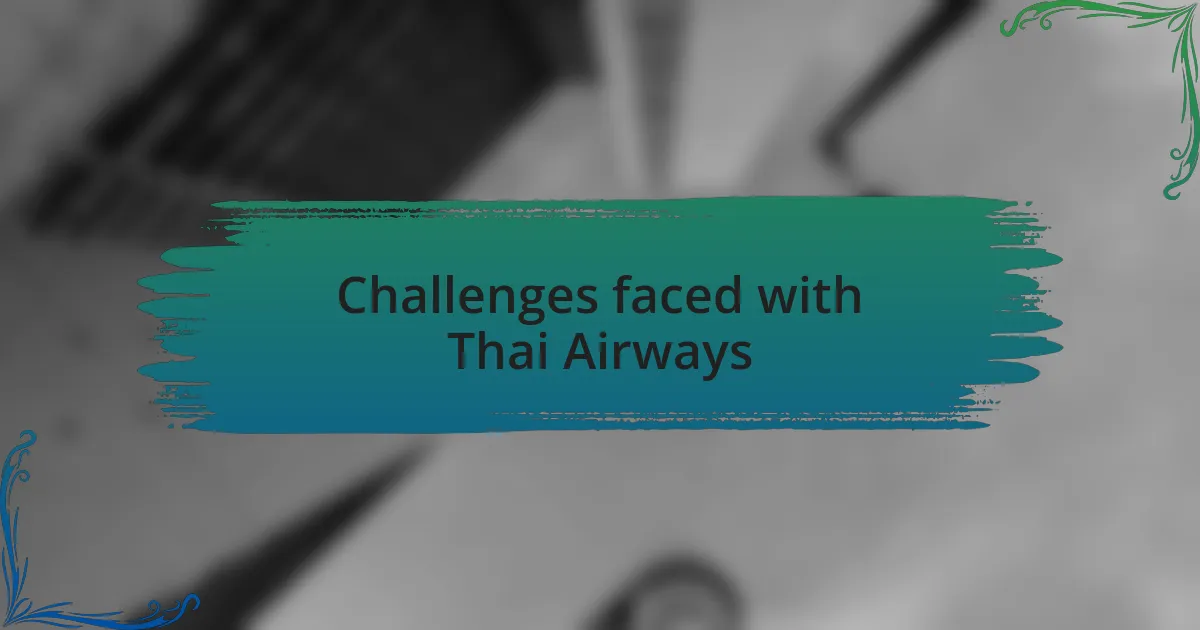
Challenges faced with Thai Airways
Challenges faced with Thai Airways can manifest in various ways, particularly when traveling to and from Thailand. I recall a long wait at a ticket counter where the attendant’s limited English posed a challenge. I had questions about my flight, but the confusion left both of us frustrated; it was a stark reminder of how language barriers can affect even simple transactions.
Another significant hurdle is understanding safety announcements. While we trust airline staff to emphasize crucial information, I once found myself straining to grasp the safety instructions because they were delivered quickly in Thai. How often do we take for granted the comfort of clear communication during flight preparations? This experience highlighted the importance of clarity, especially in situations where the stakes are high.
Moreover, the need for multilingual support is crucial for customer service in the aviation industry. On another trip, I noticed several passengers struggling with the onboard menu, which was primarily in Thai. It struck me how the joy of experiencing authentic Thai cuisine could be overshadowed by the inability to understand their options. Have you ever felt overwhelmed by choices you couldn’t comprehend? It’s not just about language—it’s about making every traveler feel included and valued on their journey.

Strategies for overcoming language barriers
To effectively overcome language barriers when flying with Thai Airways, utilizing translation apps can be a game changer. I remember using a translation app on my smartphone during a recent trip. It provided real-time translations, helping me communicate when ordering food without any stress. Have you ever felt relieved when technology bridges the gap in communication?
Another strategy is to familiarize yourself with basic Thai phrases before your journey. On one occasion, I learned how to say “thank you” and “please” in Thai, which not only impressed the flight attendants but also created a warm rapport. It made me realize that even a small effort to speak the local language can lead to more positive interactions and enhance the travel experience. How empowering is it to connect with others through language, even in a simple way?
Lastly, don’t hesitate to ask for assistance. I distinctly remember approaching a friendly staff member for help with my boarding pass, and they graciously found someone who spoke English. This experience reinforced that seeking support is perfectly acceptable; after all, we are all passengers in the journey of effective communication. Have you ever found that asking for help can often lead to unexpected kindness and understanding?
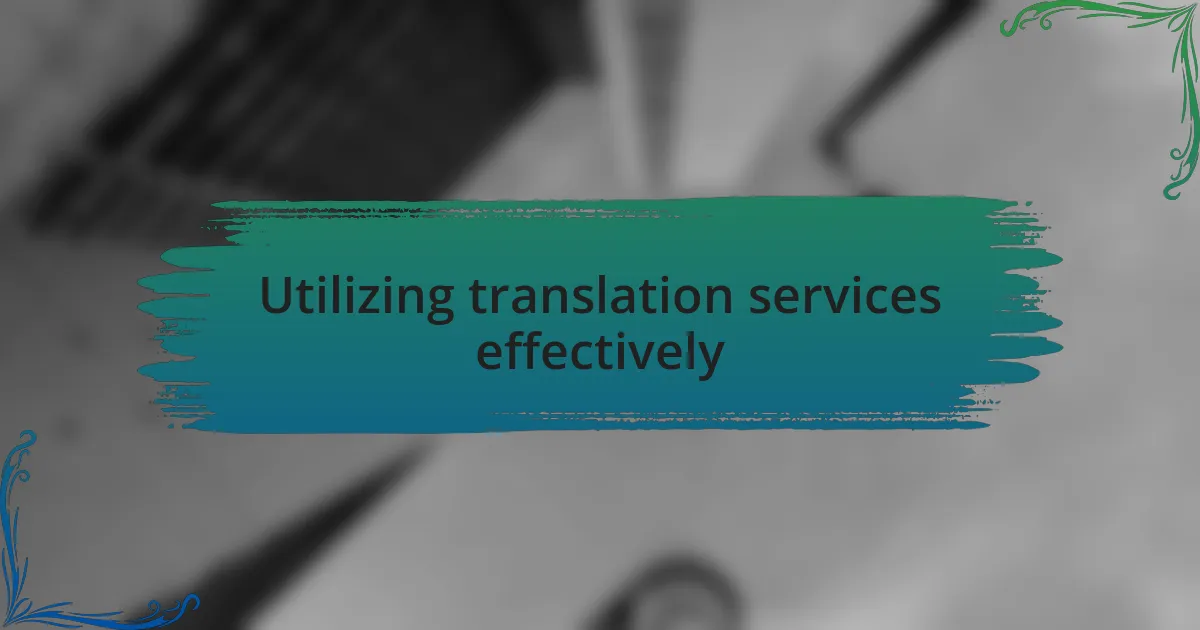
Utilizing translation services effectively
Utilizing translation services effectively can truly enhance your travel experience with Thai Airways. I remember a time when I had a question about my luggage. Using a translation service on my phone, I was able to convey my inquiry to the staff without any confusion. The sense of relief I felt was remarkable—have you ever realized how much smoother travel becomes when you can communicate your needs clearly?
When selecting a translation service, it’s important to consider both accuracy and convenience. I once tried a few different apps before settling on one that provided instant translations offline. This was invaluable while I was on board, enabling me to interact comfortably with my seatmates. Isn’t it amazing how the right tool can transform otherwise awkward moments into opportunities for connection?
Moreover, integrating translation services into your travel routine can yield surprising benefits. I recall a flight where, after using a translation app, I struck up a fascinating conversation with a fellow passenger. We discussed different cultures and experiences, all thanks to technology facilitating our communication. Doesn’t it feel wonderful to turn potential barriers into bridges?

Personal experiences with Thai Airways
While traveling with Thai Airways, I had the opportunity to experience their friendly service firsthand. On one flight, I found myself struggling with the menu items, as the options were in Thai. A flight attendant noticed my hesitation and graciously offered to explain the dishes in simple English. It was a small gesture, but it made me feel incredibly valued and at ease during the flight.
I also remember a particularly memorable connection I made thanks to the language barrier. During a layover in Bangkok, I met a fellow traveler who spoke limited English. At first, communication felt daunting, but we used a mix of gestures and a translation app to share stories about our travels. That experience sparked a friendship that lasted well beyond the trip. Have you ever felt that rush of joy when you connect with someone, despite the language gap?
Another time, I faced a language challenge while checking in online, but I learned to navigate the Thai Airways website with a little patience. Instead of feeling frustrated, I approached it as a puzzle to solve, and to my surprise, I found the process quite fulfilling. It taught me that sometimes, these little challenges can lead to meaningful experiences and personal growth while traveling.
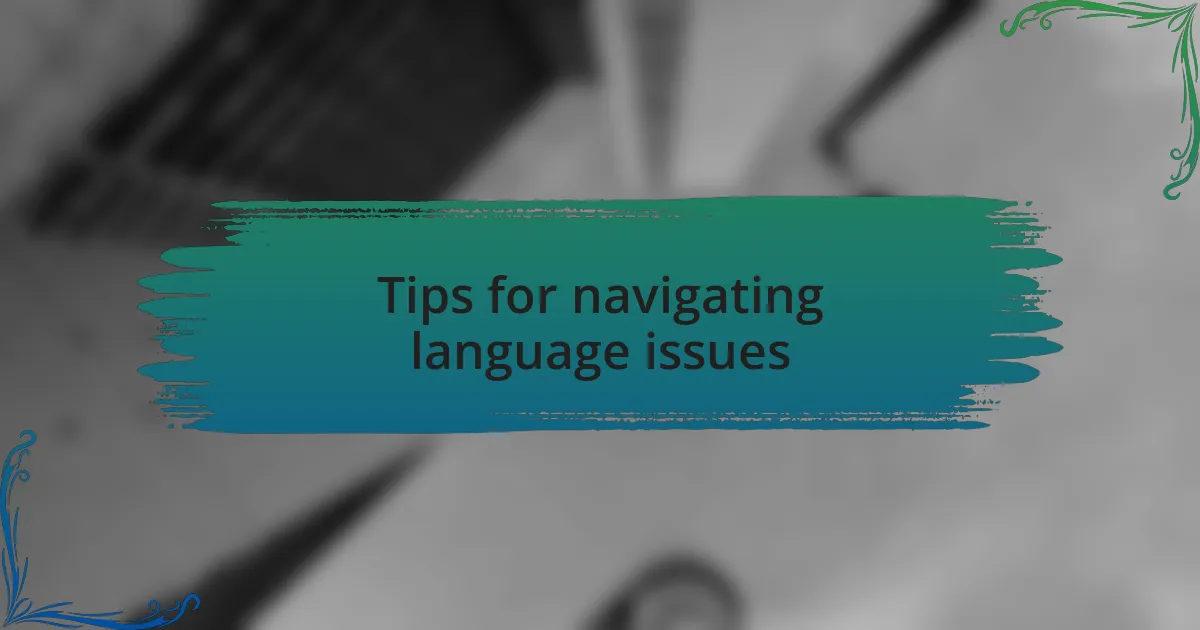
Tips for navigating language issues
When faced with a language barrier, I often find that a smile can go a long way. On one occasion, while boarding a flight, I pointed to my boarding pass and nodded to the flight attendant. She immediately understood and graciously guided me to my seat. It’s moments like these that remind me how non-verbal communication can bridge gaps, turning potential confusion into a shared experience.
In addition to relying on body language, I’ve learned the value of preparation. Before my travels, I usually download translation apps or even jot down key phrases in Thai. This approach not only boosts my confidence but also opens doors to interactions I might not have otherwise. Have you ever tried learning just a few words in a new language? It’s not just about the language; it’s about showing respect and building rapport with those around you.
Lastly, I’ve discovered that patience is essential. There was a time when a helpful local tried to direct me using broken English and hand gestures. Instead of getting frustrated when I didn’t understand right away, I took a moment to observe their gestures and the surrounding context. That moment of stillness transformed my experience, allowing me to grasp their message more fully. How often do we rush past confusion instead of taking a second to listen and explore?